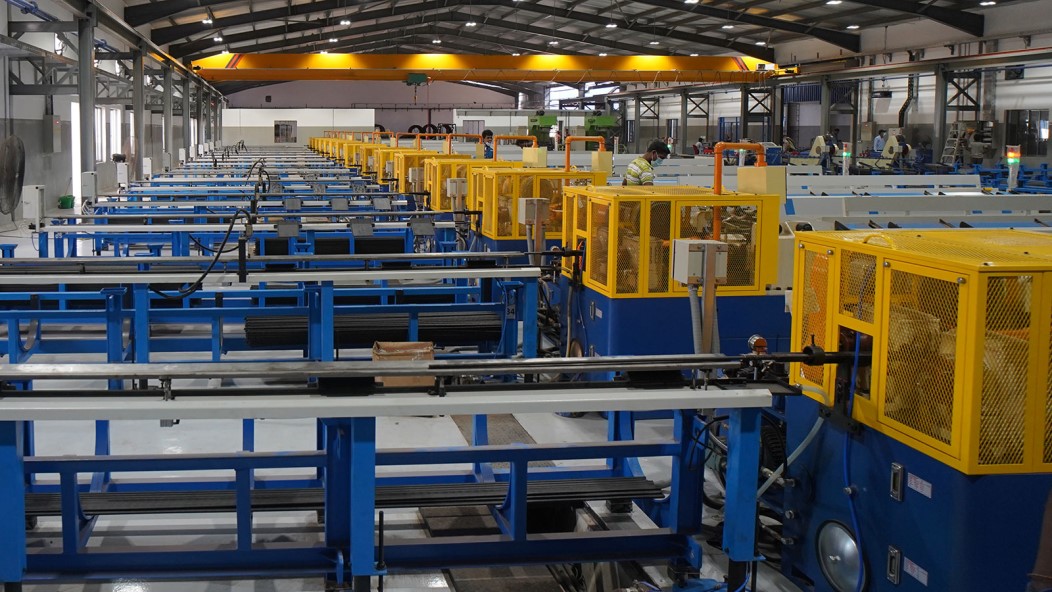
The Sri Lankan light engineering sector serves a range of industries and services in Sri Lanka and around the world including manufacturing, construction, and power.
The global demand for light engineering products is very high yet competitive. Light engineering products made in Sri Lanka can be categorised into two categories; consumer products and agricultural & industrial products. Manufactured at the state of the art facilities under globally accepted production processes, Sri Lankan light engineering products are unique, high-quality, and unrivalled.
Light engineering separates itself from heavy engineering in many ways. The recycling of existing fabricated products to generate resources instead of using direct raw material draws a major line. For example, Steel production is a heavy engineering sector while making spare parts out of existing steel is a light engineering activity.
Light engineering has less capital incentive and is more consumer-oriented when compared to heavy engineering.
The exports of Sri Lankan light engineering products are supported by over 1000 manufacturing units and 11 steel plants. Export-oriented ventures located within the country and outside the country also support this cause.
The foundry industry is one of the sector’s most highlighted components. It acts as an important feeder industry to the light engineering sector in Sri Lanka. A foundry is a workshop that casts metal. Other than foundries that cast iron and bronze, the Sri Lankan metal industry includes aluminium and brass foundries.
Most of these establishments are located in the areas of Kandy, Colombo, Gampaha, Kurunegala, Matara, and Hambantota. The aluminium foundries in the Colombo district mainly produce products such as pans, jugs, spare parts for gas cookers, and kettles. The sub-urban locations near Colombo including Malabe, Kaduwela, Athurugiriya, and Ranala are home to many of these production facilities.
The Industrial Development Board (IDB) and the Ceylon Heavy Industries & Construction Company Ltd (CHICO) are the two main large scale iron producers in Sri Lanka. Some of their main products include brake shoes, rubbing blocks, rollers, bearing blocks, and machinery parts.
According to the UN World Organisation, sustainability means meeting the needs of the present without compromising the ability of future generations to meet their own needs. Sustainable practises are focused on supporting ecological, human, and economical health and vitality.
As natural resources all over the world depreciate, the practice of this concept is more important than it may sound, which makes sustainability a global concern. The Sri Lankan light engineering industry’s main source of material supply depends on the recycling of scrap metal sourced from households and industries and follows global industry-based best practices in production to reduce energy and water consumption.
Using less energy to perform the same task is known as energy efficiency. This can also be defined as eliminating energy waste. Fans are installed with the expectation of creating a cool environment. Even though we meet these results, there are plenty of other ways that the same results can be enjoyed with less energy consumption.
Electrical fan manufacturers have broken the traditional codes of fan making and found ways to improve the energy efficiency of domestic fans. This is achieved by using different blade designs of the same weight. If there is a slight difference in the weight, it can make the fan wobble. The well-balanced blade structures reduce the energy usage of a fan by 10% - 60%.
Refrigerators are one of the main emitters of greenhouse gases. Hydrofluorocarbons (HFCs) represent 1.5% of total warming potential since it is 1400 times more potent than carbon dioxide as a greenhouse gas. Other than this, refrigerants present in most refrigerators also contain chlorofluorocarbons (CFCs) that are more powerful than HFCs when damaging the ozone layer since it is an extremely potent greenhouse gas.
This has been changed by modern-day refrigerator manufacturers who have introduced eco-friendly refrigerators. They use a blend of isobutene, propane, and all of the hydrocarbons as refrigerants. These refrigerators also use cyclopentane as an alternative blowing agent for polyethene foam insulation. By purchasing these climate-friendly refrigerators, users can also take part in the global movement against global warming.
Sri Lankan light engineering products are manufactured both for consumer use and industrial use. As such, the variety of exports are quite high and can fulfil a wide range of requirements.
Info
Directory
eMARKETPLACE
Structures of Iron & Aluminum
Directory
eMARKETPLACE
Standard Wire of Aluminum, Copper & Iron
Directory
eMARKETPLACE
Nails, Screws, Bolts & Nuts of Metal
Directory
eMARKETPLACE
Refined Copper & Lead Alloys
Directory
eMARKETPLACE
Tools, Implements, Cutlery & Parts
Directory
eMARKETPLACE
Other Light Engineering Products
Directory
eMARKETPLACE